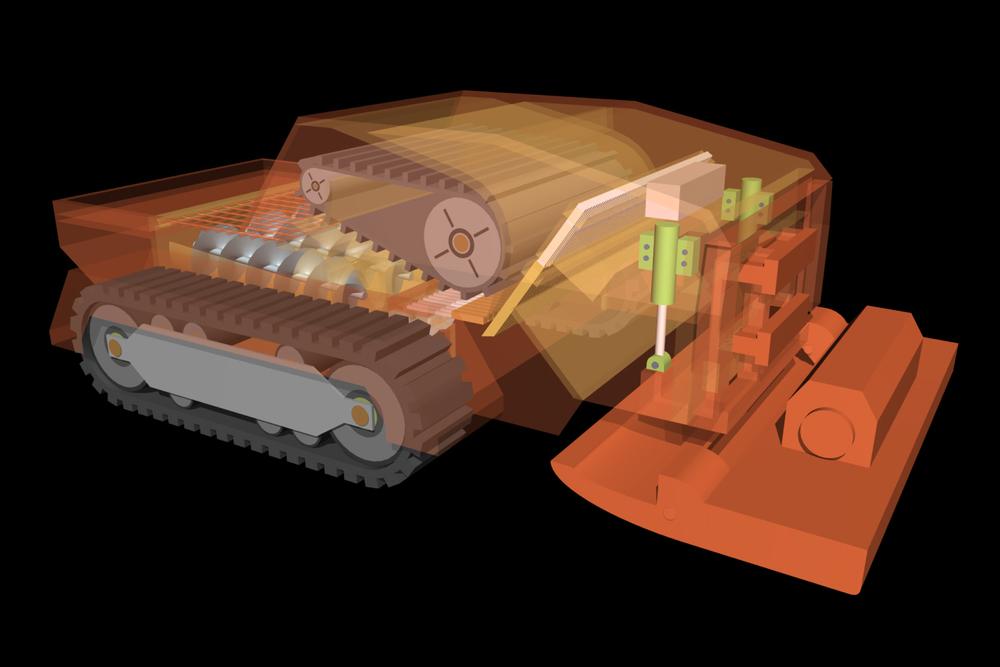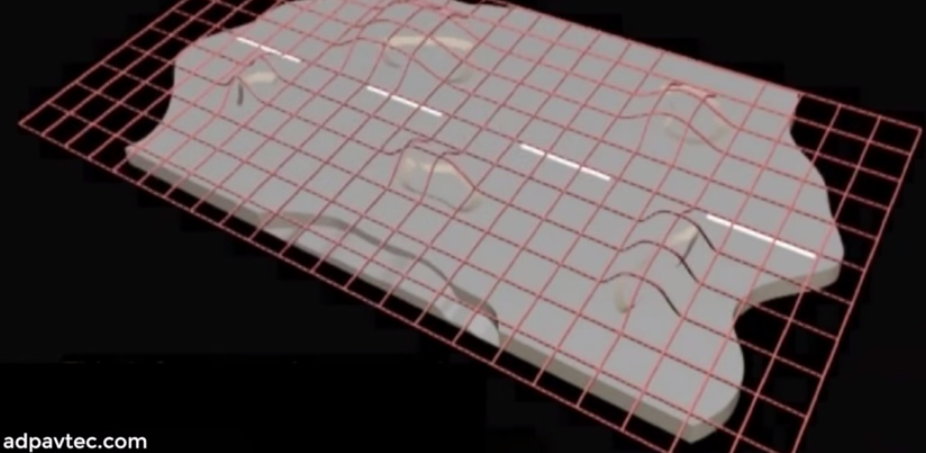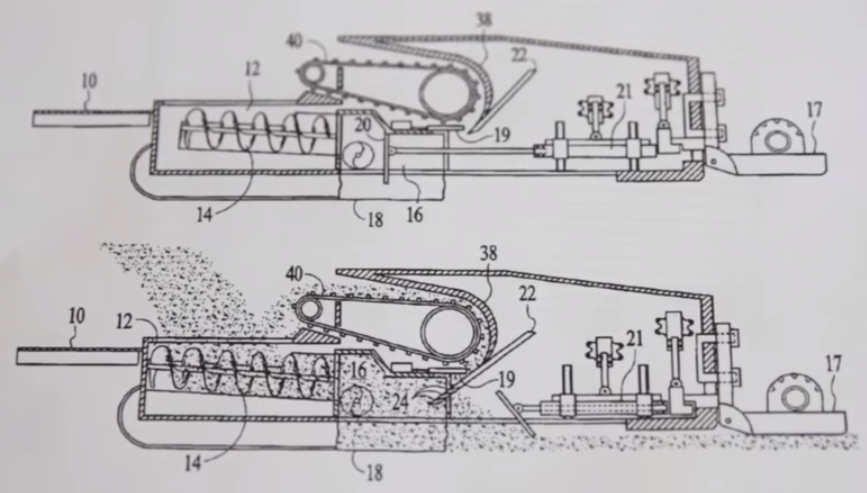Advanced Paving Technologies: Looking Forward to Rolling Out 3D Printed Asphalt & Saying Goodbye to the Construction Lane
 3D printing is able to bring about a lot of change, with many processes still evolving and coming to fruition amidst other industries that now use the technology commonly.
3D printing is able to bring about a lot of change, with many processes still evolving and coming to fruition amidst other industries that now use the technology commonly.
What’s amazing is when we see its true potential for throwing out the arduous traditional and ushering in the streamlined future. For instance, could you imagine saying goodbye to road construction as we know it? Goodbye to staring at the man with the ‘slow’ flag, goodbye to orange cones and slow zones and doubled speeding fines, and goodbye to surprise delays. And hello to paving roads the right way.
We’ve heard a lot of talk about how 3D printing will be able to benefit construction in a large way, but for the most part that has seemed far off in terms of transforming infrastructure. In less than a month, a Kickstarter campaign will kick off for the world’s first 3D printed asphalt paver. Advanced Paving Technologies, Inc., working with the UC Davis Pavement Research Center, has created a 3D asphalt machine which will not only offer a much better quality of road, it will also improve on the current methods of road construction substantially. With Kickstarter, they hope to raise at least $50K as the paver heads through development and prototyping.
 The 3D paver works using lidar, which functions like radar, but is a light laser. It can scan a road, even a pot-hole riddled one, and then makes a digital mat which can then be 3D printed in asphalt with variable layered levels of material, or screed. Rehabilitating older asphalt, the 3D printed pavement can be applied simply where it’s needed, and takes only a fraction of the time associated with normal paving–and at a fraction of the traditional cost.
The 3D paver works using lidar, which functions like radar, but is a light laser. It can scan a road, even a pot-hole riddled one, and then makes a digital mat which can then be 3D printed in asphalt with variable layered levels of material, or screed. Rehabilitating older asphalt, the 3D printed pavement can be applied simply where it’s needed, and takes only a fraction of the time associated with normal paving–and at a fraction of the traditional cost.
“Essentially it will 3D print a new road to fix the old road,” Eric Young, COM of Advanced Paving Technologies, told 3DPrint.com. “It’s the milling of roads that causes the long delays and traffic congested associated with road rehabilitation.”
With normal maintenance to roads, generally the symptoms are just being fixed–but not the problem. Bumps and cracks are paved over but before too long, they reappear, water seeps in, and the pavement breaks down again.
The 3D paver is offering a true solution, according to the Advanced Paving Technologies team. They believe their system, offering better compaction, will eliminate much of road maintenance as we know it. Roads will last much longer, and require much less milling, less material, and reduces the carbon footprint.
“The 3D asphalt paving machine that I have designed can address a dip here, a bump here, a rut over there in one single pass, in providing more material or less material where it’s needed,” says John Smith, founder of Advanced Paving Technologies, who came up with the brainstorm for his original concept while sitting in traffic on the highway in Silicon Valley.
The benefits are enormous, and apply to the environment as well, considering how many of us sit in long delays with the engine idling, just wasting fossil fuels. The paver has been publicly endorsed by the University of Washington, UC Davis Pavement Research Center, The Transtec Group, and Century Construction.
“Our design has been deemed feasible by CTC United Defense. We have US and European patents,” Young told 3DPrint.com. “We are now crowdfunding the initial core research on the machine to be conducted at UC Davis Pavement Research Center in spring 2016, which will lead us to a prototype. The crowdfunding campaign launches October 15th of this year in less than a month. This will be the first crowdfunded piece of road equipment in history.”
Overall benefits to everyone include:
- Faster road rehabilitation
- Less funds spent on maintenance
- Better urban and rural traffic flow
- Less carbon emissions from road work and nearby traffic congestion
- Less road related damage to cars and trucks
- Increased options for paving contractors
- Smoother, safer roads, also offering better gas mileage
The 3D paver, which will be in ‘core research’ at UC Davis Pavement Research Center until spring of 2016, after which they hope to have a prototype ready, funded by their upcoming Kickstarter campaign, which launches on October 15th.
Are 3D printed roadways the wave of the future? Let’s hear your thoughts in the 3D Printed Roads forum thread on 3DPB.com.
Subscribe to Our Email Newsletter
Stay up-to-date on all the latest news from the 3D printing industry and receive information and offers from third party vendors.
Print Services
Upload your 3D Models and get them printed quickly and efficiently.
You May Also Like
Making Space: Stratasys Global Director of Aerospace & Defense Conrad Smith Discusses the Space Supply Chain Council
Of all the many verticals that have been significant additive manufacturing (AM) adopters, few have been more deeply influenced by the incorporation of AM into their workflows than the space...
EOS in India: AM’s Rising Star
EOS is doubling down on India. With a growing base of aerospace startups, new government policies, and a massive engineering workforce, India is quickly becoming one of the most important...
PostProcess CEO on Why the “Dirty Little Secret” of 3D Printing Can’t Be Ignored Anymore
If you’ve ever peeked behind the scenes of a 3D printing lab, you might have caught a glimpse of the post-processing room; maybe it’s messy, maybe hidden behind a mysterious...
Stratasys & Automation Intelligence Open North American Tooling Center in Flint
Stratasys has opened the North American Stratasys Tooling Center (NASTC) in Flint, Michigan, together with automation integrator and software firm Automation Intelligence. Stratasys wants the new center to help reduce...



































